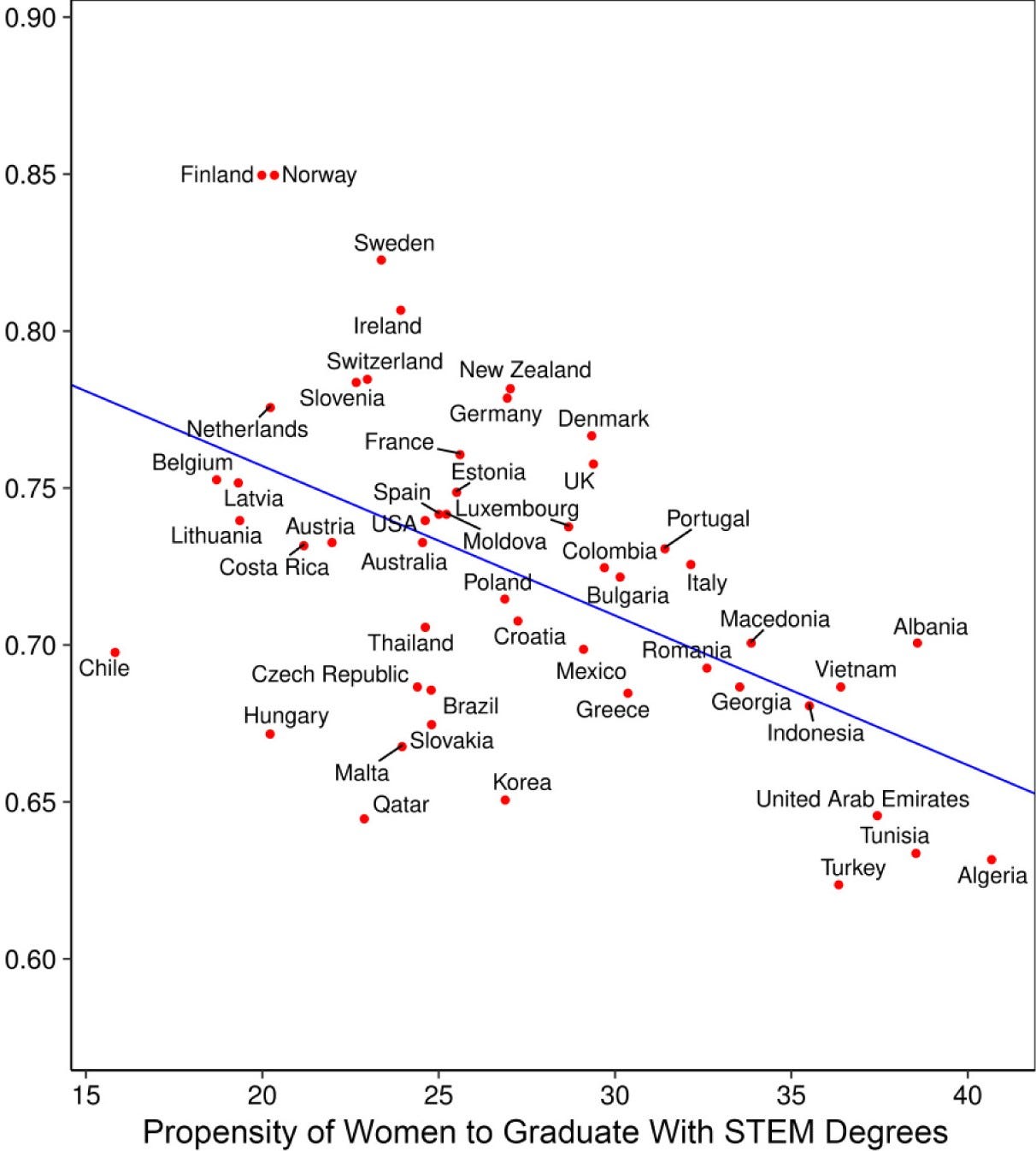The Gender-Equality Paradox in STEM
Nations with greater gender equality have a lower percentage of female STEM graduates
The graph below shows the percentage of female STEM graduates in a range of nations as a function of national levels of gender equality. Note that the variable on the vertical axis is the Global Gender Gap Index (GGGI), which assesses “the extent to which economic, educational, health, and political opportunities are equal for women and men.”
The key finding is that higher levels of gender equality are associated with a lower percentage of female STEM graduates, rather than a higher percentage as we might have expected. This is the most famous example of a counterintuitive but widespread phenomenon known as the gender-equality paradox (see my earlier post on this topic here).
The graph comes from a classic 2018 paper in Psychological Science by Gijsbert Stoet and David Geary, and is my pick for the most surprising, most thought-provoking, and most controversial graph to come out of psychology in recent years.



